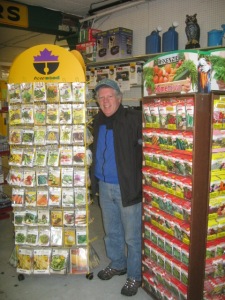Looking for a way to stop throwing out all your food scraps? How about a fun activity to do on your day off, or with the family? – You’ve come to the right place!
With the lack of garbage disposal sites becoming more prominent, composting is quickly being taken up by those young and old. What is compost exactly? – It is what happens when organic material (such as food) breaks down to become organic, nutrient rich fertilizer (great for plant growth). Composting allows vitamins and minerals from uneaten food to get recycled back through the soil and into the new food growing in our gardens.
Where Do I Start?
With so many options available, it’s important to choose a composting bin that works best for your space and lifestyle. There are many different kinds such as;
- Tumblers
- Open Bins
- Closed Bins
- Stationary Bins
- Movable Composters
- Multi-Bin Systems
- Countertop Crocks
- Bokashi Composting
If you’re like me and live in an apartment building, you can use a worm bin instead! A worm bin is great when you have limited space, and it makes for a great family activity if you have kids. See how to build your own worm bin here.
How Do I Make the Compost?
When it comes to composting, it’s important to remember that there’s a simple equation you should follow: N + C + O2 + H2O = Compost. This ensures you don’t have too much or too little of any of the gases that must be present in order for the compost to degrade.
In order to create this equation, you can create layers in your compost by using 1 part green material, and 4 parts brown material with a sprinkle of water. Make sure to stir occasionally, using a shovel or by spinning your bin a few times, to bring the bottom layer to the top.
How long is this supposed to take? Well, it can take anywhere from 1-6 months to fully cook through it all, depending on the proportions of your ingredients and the frequency of stirring (once a week is a good start). Daily turning can yield compost within 21 days.
A great tool to moniter the progress of the composting bacteria action is by using a compost thermometer. This tool has a long shaft that you insert into the compost and the temerature dial immediately reads how hot the compost is. Temperatures over 140F for a period of time will kill weed seeds. When the temperature starts to fall, turn the compost pile to add oxygen. The temperature will rise again. Eventually after turning the pile several times, the temperature will not increase. This means the compost is ready for harvest. Screen the compost and what ever doesn’t screen, put back in the composter for a 2nd term. The screened compost can now be applied to your garden soils.
Another great tool is a moisture meter.
What is Compostable?
Whichever composting method you choose, the following items are generally safe to compost.
Kitchen Waste
- Fruits and vegetable scraps
- Coffee grounds
- Tea leaves/bags
- Dead/wilted plants or flowers
- Paper towels and napkins
- Soiled newspaper and cardboard
- Stale bread and crackers
- Junk mail
Yard Waste
- Fresh cut grass
- Weeds (but none with seeds)
- Dry leaves and grass
- Straw sawdust
How Do I Best Establish a Method?
To solidify your new habit, it’s important to establish an easy way to incorporate composting into your lifestyle. It’s important to decide how you’re going to get your kitchen scraps outside. Some do it after each meal, while others store them in a small counter-top container that gets emptied every other day or so. Any method you choose will get you on your way to establishing a great habit!
Anything Else I Should Know?
Now that you’re all set to begin composting – don’t forget to find a good place to store yard waste until it’s ready to be added to the compost. Too little or too much moisture can impede the composting process, so it’s important to protect the waste from the elements (particularly yard waste).
Don’t forget to add your finished compost to your homegrown plants to ensure they’re receiving all the wonderful benefits!
Good luck and Happy Composting!







































 Unfortunately that show on TV, that next chapter of a new book or phone call with a friend distracted you. Just long enough that you forget what you were doing until over an hour has passed. Now, where you used to have a lawn you now have a kiddy pool. And your roses and begonias are learning the back stroke. (I’ve done this tons of times) And that is one mess the Shamwow can’t handle!
Unfortunately that show on TV, that next chapter of a new book or phone call with a friend distracted you. Just long enough that you forget what you were doing until over an hour has passed. Now, where you used to have a lawn you now have a kiddy pool. And your roses and begonias are learning the back stroke. (I’ve done this tons of times) And that is one mess the Shamwow can’t handle! And when left alone they can take over. They thrive in almost every climate and spread like wildfire.
And when left alone they can take over. They thrive in almost every climate and spread like wildfire.





